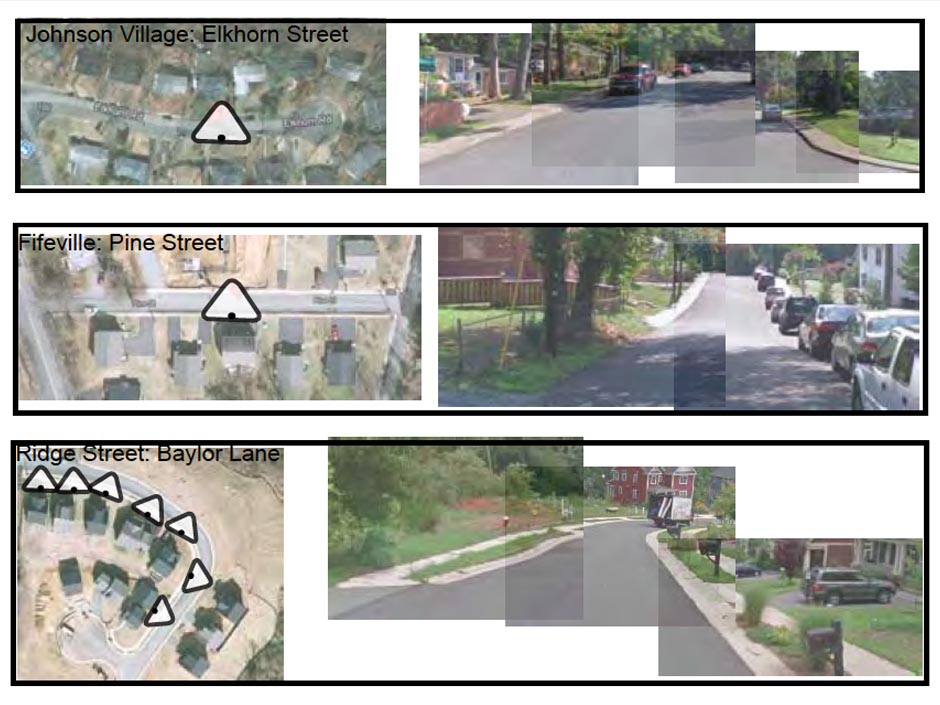Johnson Village, Fifeville, Ridge Street
RidgeStreetJohnsonVillageFifeville (click PDF)
Spring 2013
Team members: Huongtra Pham, Mark Curry, Caitlin Levine, Rachel Himes, Luke Escobar
A Look at Sustainability in the Ridge Street, Johnson Village, and Fifeville Neighborhoods
For the PLACE Design Task Force project, we identified nodes within the south central sector of Charlottesville including Johnson Village, Fifeville, and Ridge Street neighborhoods in order to asses the sustainaiblity of each place and its connection to the greater Charlottesville area. To define the level of sustainablity in these neighborhoods, we explored themes of transporation, block density, block size, public spaces, and safety. With these themes, we developed a pattern language of metrics to measure the success of an area in regards to its sustainabilty. To capture a wide range of spaces within these neigborhoods, we categorized spaces into small streets, big streets, housing types, parks, and schools. Large streets defined the main corridor typology in terms of program in order to asses the sustainabilty of light distribution, modes of travel, and buffer zones. Small streets looked at density, block size, walkablity, and perception of safety. Schools looked at neighborhood layout patterns and connectivity through walkability. Housing types looked at the type of housing that existed in each neighborhood such as single-family homes, duplexes, apartment, and townhomes. The orgnization of these housing types was crucial in evaluating the sustainability. Lastely, parks evaulated accessiblity, program, and maintenance.
Using precedents of successful sustainable places, we determined a sustainable pattern language that we incorporated in diagramming techniques. Through research and diagramming, we were able to classify aspects of these neighborhoods that were sustainable and make conclusions about each neighborhoods’ current and potential sustainability.

